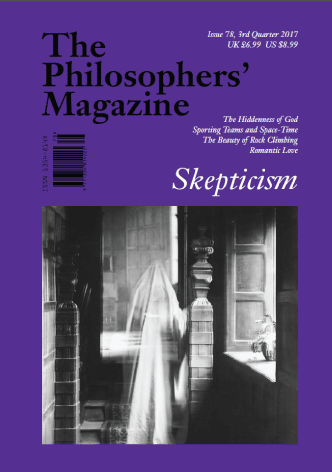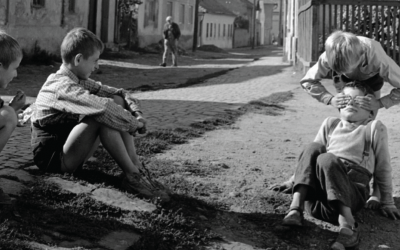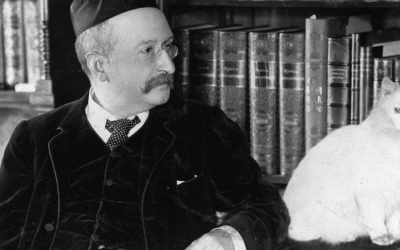Reviewed by Erich Hatala Matthes
Things: In Touch with the Past by Carolyn Korsmeyer (Oxford University Press), $49.95/£32.99
Relics, keepsakes, artworks, heirlooms, mementos, memorials. Despite their variety, all of these objects share a distinctive common feature: it matters to us that they are genuine, authentic, real. I have an insignia ring that belonged to my father. A replica or replacement wouldn’t do, because then it wouldn’t be my father’s ring. It is an object that, as Carolyn Korsmeyer puts it, embodies the past. However, not everything that matters to us really matters: especially in cases where we can’t tell the difference between the real deal and a replica, some are skeptical that there could be any difference worth caring about. In such cases, allegiance to the original can sometimes seem like a fetish or a kind of magical thinking, as if the touch of an original creator or owner imparted a mystical aura to an object that renders it special and unique.
Korsmeyer’s aim in Things: In Touch with the Past is to vindicate our concern with Real Things (as she emphatically refers to them). She does so by artfully evoking the ways in which real things matter, responding to skepticism about their significance, and sorting through a dizzying array of complications that we face once we acknowledge the value of the Real. Her thesis is complex, but in a nutshell, she argues that genuineness is a property of objects that possess a range of values (cognitive, ethical, and aesthetic) through their ability to embody the past.
Taking a nod from the character of our experience with real things (“a shiver, a thrill, a poignant acknowledgement, a small dose of awe”) Korsmeyer argues that there is an important aesthetic and affective dimension to our experience of the genuine. This might seem surprising, because, as we have noted, being genuine or real is not itself a perceptible property of objects: even the most discerning eye can be fooled about what is genuine and what is not. So why think that realness itself has an aesthetic dimension? Korsmeyer argues that it is touch primarily, as opposed to vision, that is most aptly invoked when describing our experience of the genuine, even when it is “almost entirely non-sensuous,” as when we are merely in the proximity of a real item that we are prohibited from touching. This is because the thrill of genuineness lies less in what the real thing looks like (though signs of age can certainly enhance our experience) and more in the mere fact that we are in the presence of the real thing. Because this is not primarily a sensory experience, it can be difficult to characterize in familiar aesthetic language, but anyone who has had the experience knows it: as Korsmeyer puts it bluntly and amusingly, “it is more like Wow”. The fact that this affective presence is destroyed by the revelation that an object is a fake underscores the point: even though something might look old, “when we learn that the patina was not earned, as it were, the thrill of contact with antiquity diminishes”.
But are we justified in treating the real thing so reverently? In one compelling line of defense, Korsmeyer documents how utterly familiar such a response is in human experience. As she puts it: “My goal is to confirm that appreciating one and only one thing because of what it simply is has several affective companions”. For instance, through a fascinating (and sometimes disturbing!) discussion of “bedtricks” in literature, Korsmeyer illustrates how familiar it is for some of our most important emotional responses to be “non-fungible,” that is, responsive to only a singular object. The fact that Zeus might appear as indistinguishable from your husband does not make Zeus the proper object of your love! By reminding us that concern for the genuine is commonplace in a range of contexts, Korsmeyer turns the tables and makes the skeptics out to be the ones with the implausible view.
That being said, Korsmeyer is also sensitive to the complications and strangeness that attend our concern with the genuine. Handling the hair in a mourning brooch from her grandmother’s jewelry box, Korsmyer remarks upon the “mildly weird sense of contact” it imparts. Most significantly, Korsmeyer discusses the diverse ways in which objects can fall away from straightforward attributions of genuineness: objects can be damaged, disrupted, fragmented, repaired, and reconstructed in ways that challenge, though do not necessarily extinguish, the aura of the genuine. As she puts it, the assessment of genuineness “operates on a pendulum”, a metaphor that runs through the later pages of the book, and it is only through careful examination of actual examples that we can trace the pendulum’s movements. Korsmeyer offers such cases in spades, an explicit tactic that grounds her thoughtful reflections and distinguishes the book from the more familiar philosophical terrain of thought experiments. We are taken from the terminus of the Erie Canal to the Gettysburg address to Napoleon’s teeth to the reconstructed arch of Ancient Palmyra, and all manner of cases in between. Fittingly for a theory that foregrounds the importance of touch, Korsmeyer offers us an opportunity to get a grip on the full complexity of Real Things. We come away with a new feel for the genuine and an enhanced understanding of its importance.
Erich Hatala Matthes is Assistant Professor of Philosophy at Wellesley College. His primary research interests concern the ethics, politics, and aesthetics of cultural heritage, art, and the environment.
You might also like...















